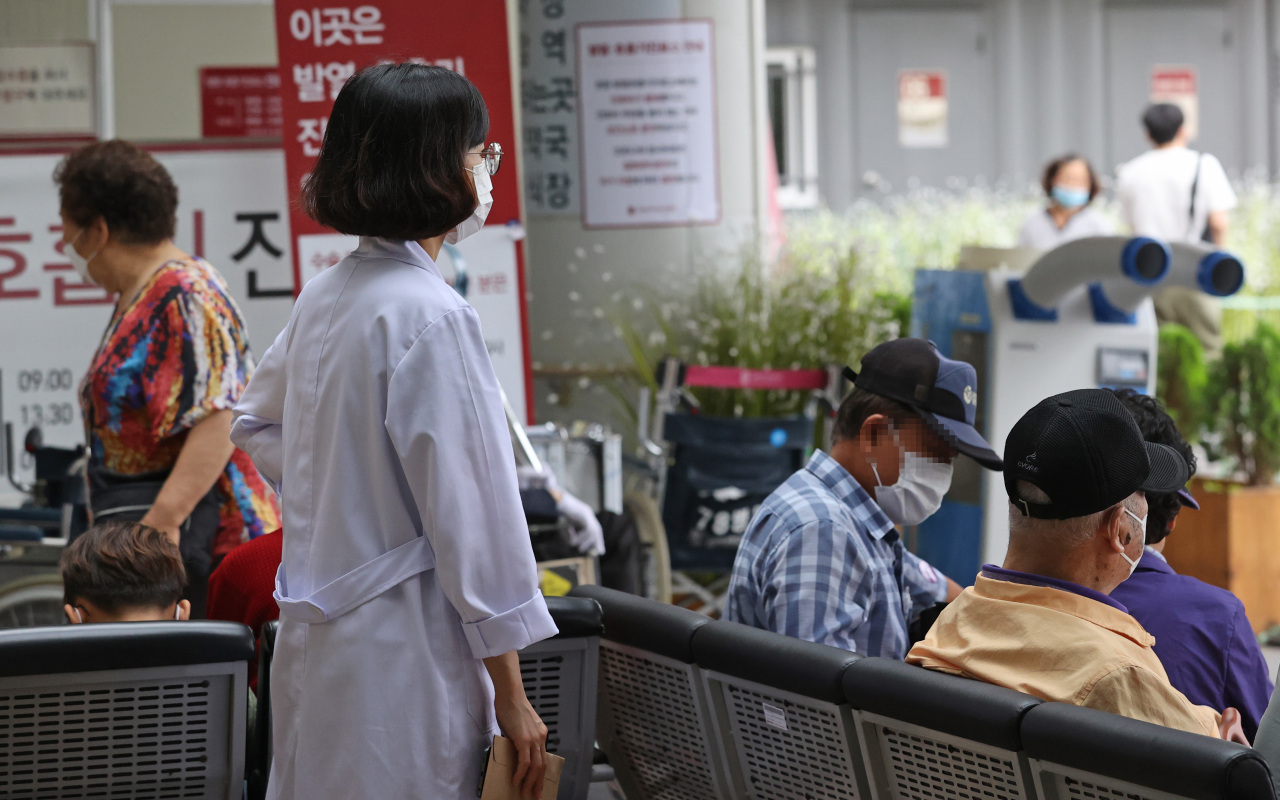 |
(Yonhap) |
South Korea’s trainee doctors went on a one-day strike Friday, in protest against the government’s plan to increase the number of medical students in the country.
No major disruptions in medical services were reported, as affected hospitals mobilized alternative health workers including clinical doctors and medical professors to fill the absence of interns and resident doctors at intensive care units, surgery and emergency rooms.
The government laid out a plan to increase the number of medical students by 4,000 over the next 10 years – up to 400 every year from 2022 -- and to set up a public medical school, as part of efforts expand access to medical care for those living in rural areas.
The striking doctors argue that there is already a sufficient number of medical doctors given the shrinking population in the country, and the focus should instead be on where the medical system currently fails, for instance, improving working conditions for those working in the public health sector or in rural areas.
The Korean Intern Resident Association, a group of interns and resident doctors, claimed about 70 percent of its 16,000 members joined the 24-hour walkout.
An estimated 6,000 trainee doctors held a rally in Yeouido, southwestern Seoul, Friday, demanding the government scrap its plan to expand the admission quotas for medical doctors.
Another major strike is scheduled for next Friday, led by the Korea Medical Association that represents some 130,000 doctors.
The government voiced deep regret about the collective action by trainee doctors during the COVID-19 crisis, despite its calls to resolve the issue through dialogue.
“It is very regrettable that trainee doctors suspended essential treatment at emergency rooms and intensive care units, which is directly linked to people’s lives and safety,” Vice Health Minister Kim Gang-lip said in a briefing.
The government earlier called on trainee doctors to call off their planned strike, as it could cause disruptions in the country’s medical system already grappling with COVID-19 patients.
Talks between the Health Ministry and KIRA fell through a day earlier.
The government’s plan came as the coronavirus pandemic laid bare the imbalance faced by residents living in the Greater Seoul area and those who are not in terms of access to medical services, as well as a shortage of public health care workers.
Under the plan, three-quarters of the 4,000 additional medical students will gain admission on condition they work in rural or remote areas where doctors are needed for at least 10 years. If they fail to complete the 10-year stint, their medical licenses will be revoked. The 1,000 remaining extra places will be for doctors specializing in specific areas, such as epidemiology and research, according to the plan.
Korea has more than 100,000 doctors, or 2.4 doctors per 1,000 people, among the lowest among OECD member countries. Seoul has 3.1 doctors per 1,000 residents, but the ratio drops to 1.4 in North Gyeongsang Province and 1.5 in South Chungcheong Province, according to government data.
By Ock Hyun-ju (
laeticia.ock@heraldcorp.com)








![[Today’s K-pop] Blackpink’s Jennie, Lisa invited to Coachella as solo acts](http://res.heraldm.com/phpwas/restmb_idxmake.php?idx=644&simg=/content/image/2024/11/21/20241121050099_0.jpg)